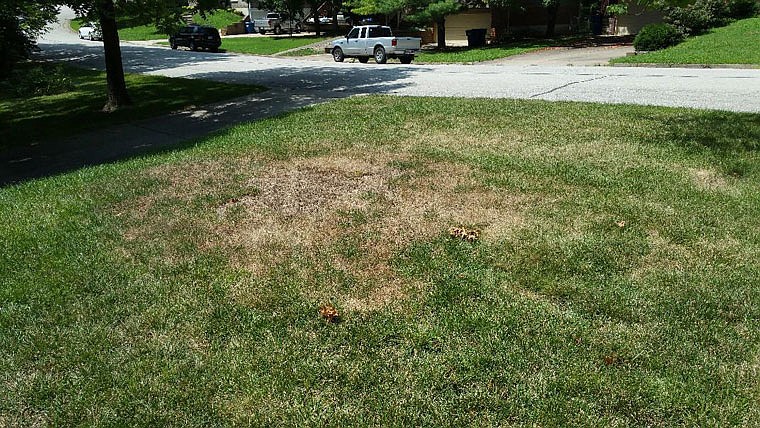Q. Crabgrass is growing like crazy in my lawn. Is there anything I can do?
A. Keep it mowed! It is too large to apply a selective herbicide to kill it but not your desirable grass. That would have to have been applied about one month to six weeks ago. Crabgrass will often break out in late June or July if we have a lot of rain. So it is not surprising to see it coming on now given the wet July. It is a warm season annual, so the frost will kill it, and it will go away naturally. Try to keep it mowed so it doesn't go to seed. If it crawls out of place along walks, beds, etc., then you can consider killing it back by carefully treating it only with a non-selective herbicide (i.e., with the active ingredient glyphosate, made popular by Roundup).
Q. What fall vegetables can I still plant? Is it too late for turnips?
A. Turnips should have been planted by now. You can still try, but you might need to cover them with a row cover or something similar in October to get them to size up. Lettuces and greens can be direct seeded up until Labor Day weekend. Transplant cold crops like cabbage, broccoli and cauliflower ASAP, as well as fall seeding of green beans, beets and carrots. Call the MU Extension office if you need suggestions on where you might find fall veggie transplants. Napa cabbage and baby bok choi both work very well in the fall.
Q. I have grass dying out in patches in my lawn (see photo). What is it, and what should I do?
A. That is typical brown patch, which is a pretty consistent disease, especially problematic on tall turf-type fescue. It can be prevented by use of fungicides back in May and June. By now. the better option is to reseed the area at the end of August or early September. Look for a grass seed blend that has a mix of seed with less tall turf-type fescue.
Q. I get chiggers even if just walking across a lawn, but I thought they weren't supposed to be in grass cut short. Am I crazy?
A. No, you're not crazy, just chigger-sensitive. I looked into this just the other day because the same happened to me, and I too thought they weren't in tidily cut lawns. I consulted a turf specialist with the University of Missouri, and he said they sure can be in lawns. They just get brushed onto your ankles, etc., easier with taller foliage. I also encountered a friend who got them rather badly on his legs from grass blowing up on him when he was using his riding lawnmower on a breezy day. The good news is, if you are just walking across a lawn, you should only need to treat your shoes with insect repellent.
Q. I was picking tomatoes this week, and the fruit from one variety looked really bad. What's the problem with it?
A. That is not a fruit rot or other disease. It is damage from stink bugs. Insects are sometimes preferentially attracted to a specific variety in a mixed planting, which is probably why you only noticed it on this one. Stink bugs have a probing/sucking mouth, and their feeding will leave small yellowish/whitish spots. When a lot of damage occurs, the fruit can get kind of bumpy. And the stage of the fruit development when feeding occurs can affect the symptoms. I encourage people to tolerate stink bugs unless they are really bad. You can still eat the fruit, although the taste of it might not be as good, so consider using for cooking or other instances where it will be diced up.
The Central Missouri Master Gardeners are a volunteer group of 191 members, 122 of whom are Cole County residents, who maintain 11 beautification sites in Cole County. Master Gardeners must complete a basic training program of at least 30 hours of horticultural training including landscaping, lawns, vegetables, flowers and fruits, as well as 30 hours of volunteer service.

